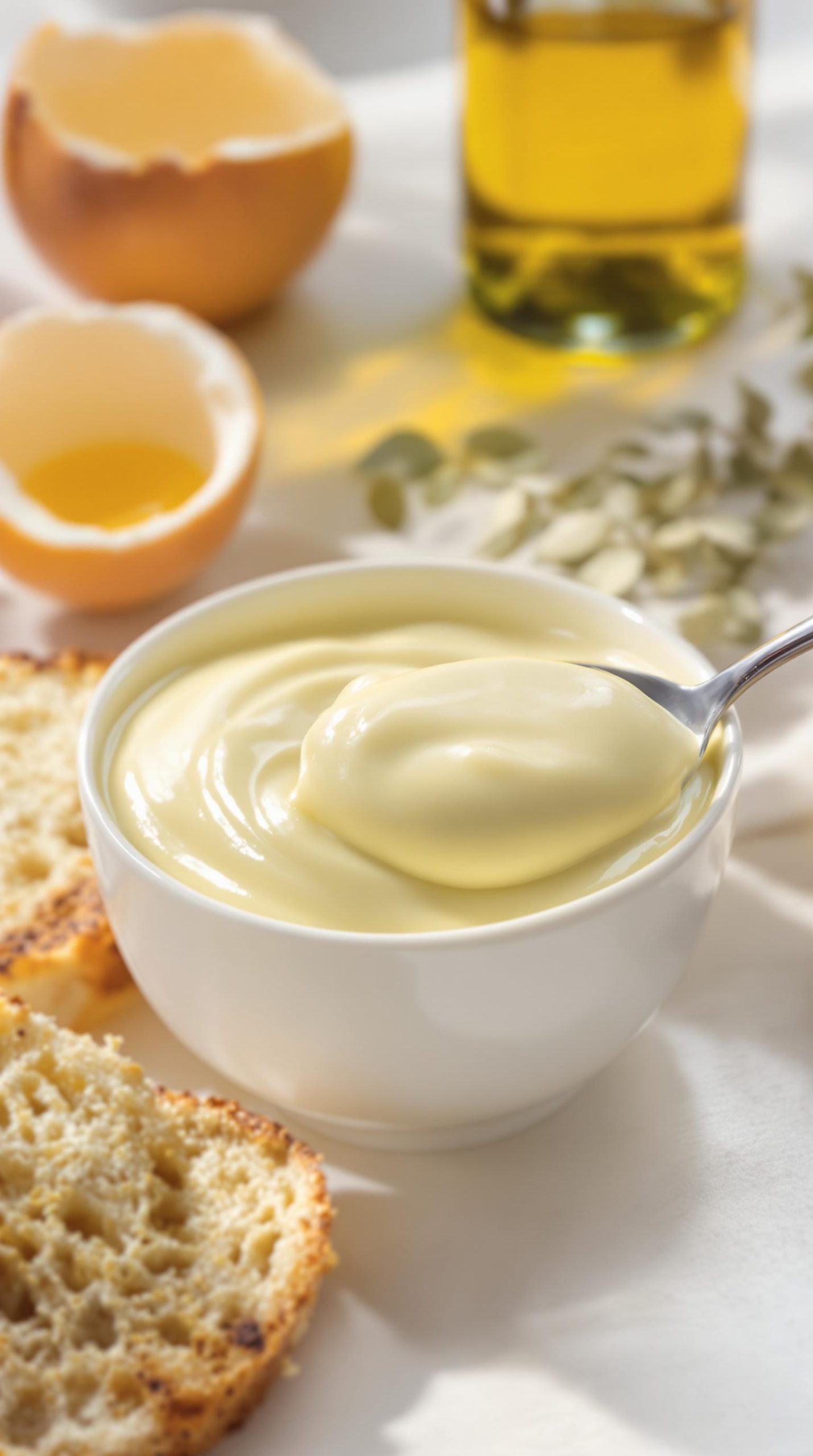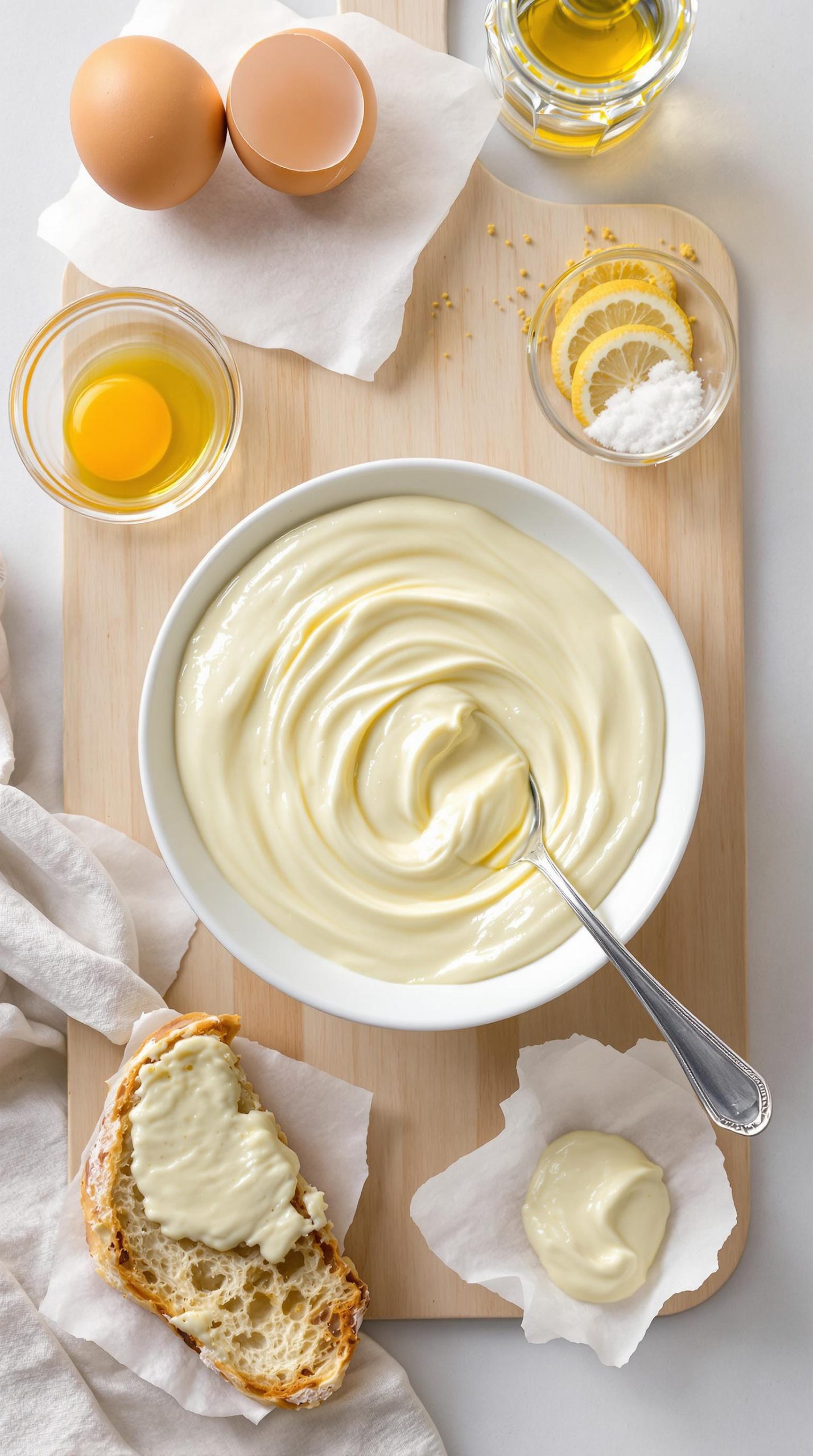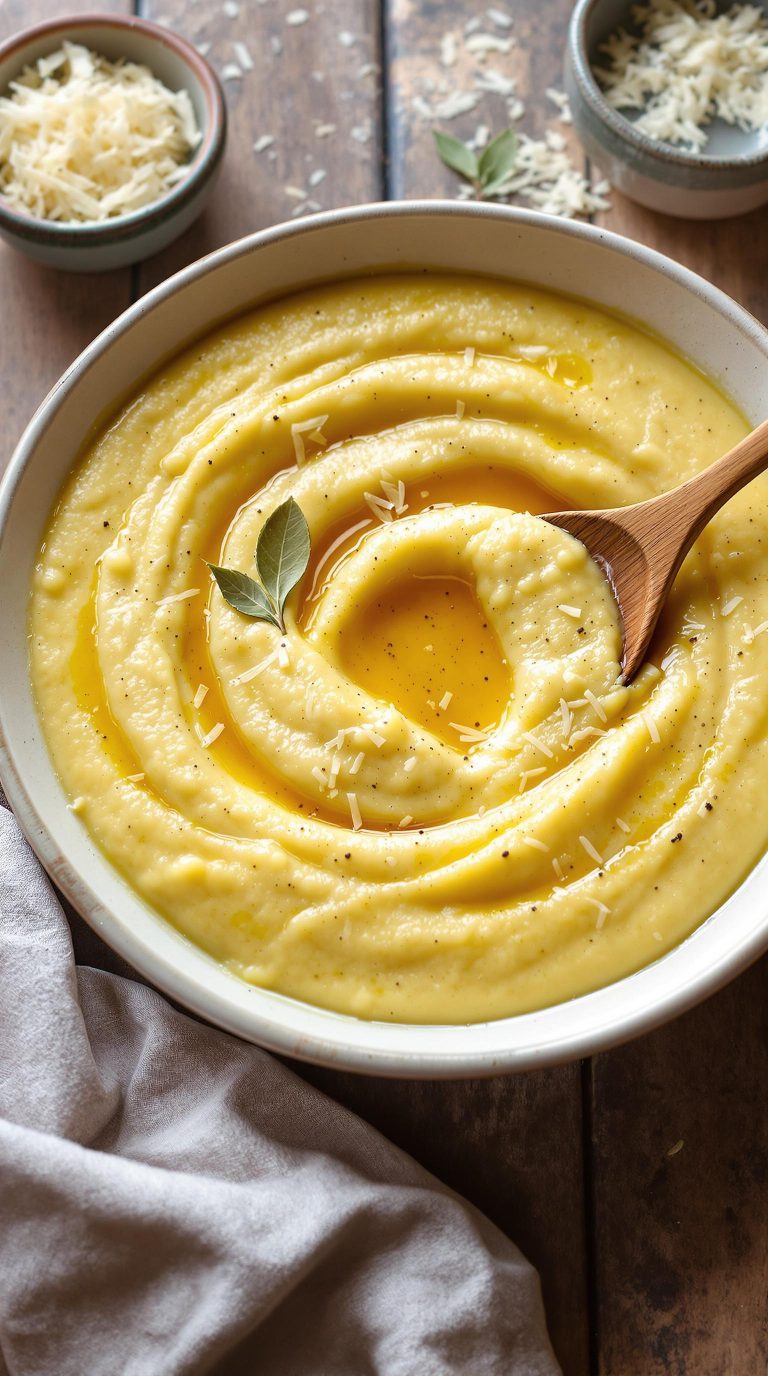Why You’ll Love this Homemade Mayonnaise
There’s something magical about making mayonnaise from scratch that the store-bought version just can’t match.
You’re in complete control of every ingredient, which means no preservatives or mysterious additives. Can your supermarket mayo boast that?
The silky texture and rich, complex taste will elevate your sandwiches, salads, and dips to gourmet status.
It’s surprisingly simple to make, too. With just egg yolks, oil, and a few seasonings, you can create something truly spectacular in your own kitchen.
Perfect thickness, perfect tanginess. Your taste buds will thank you.
What Ingredients are in Homemade Mayonnaise?
Homemade mayonnaise is a revelation compared to store-bought versions. It’s fresher, more flavorful, and you know exactly what’s going into it.
The ingredient list is surprisingly simple, but each component plays a vital role in creating that perfect, creamy texture and balanced flavor profile. Making your own mayo might seem intimidating at first, but once you understand the basic ingredients, you’ll wonder why you ever settled for the jarred stuff.
- 2 egg yolks
- 3/4 teaspoon salt
- 1/2 teaspoon mustard powder
- 1/8 teaspoon sugar
- 1 pinch cayenne pepper
- 4-5 teaspoons lemon juice or white vinegar
- 1 1/2 cups olive oil or other salad oil
- 4 teaspoons hot water
When selecting your ingredients, quality matters tremendously. The eggs should be as fresh as possible (some chefs even recommend room temperature eggs for better emulsification).
For the oil, you have options—pure olive oil can be quite strong in flavor, so many prefer using a lighter olive oil or a neutral oil like canola or grapeseed for a milder taste. You can also experiment with the acid component, switching between lemon juice and vinegar depending on your preference.
The hot water might seem like an unusual addition, but it helps stabilize the emulsion and gives your mayonnaise that perfect consistency.
How to Make this Homemade Mayonnaise

Making homemade mayonnaise is all about the emulsion process—that magical transformation where oil and water-based ingredients come together to create something creamy and cohesive.
Start by beating 2 egg yolks in a small bowl with 3/4 teaspoon salt, 1/2 teaspoon mustard powder, 1/8 teaspoon sugar, a pinch of cayenne pepper, and 1 teaspoon of lemon juice. You want to whisk vigorously until the mixture becomes thick and turns a pale yellow color. This is your foundation, and the thoroughness of this step really sets you up for success. Using an electric mixer at medium speed works wonderfully here, but a good old-fashioned whisk and some elbow grease will do the trick too.
Now comes the important part—adding the oil. This isn’t a step to rush. Begin by adding about 1/4 cup of your 1 1/2 cups olive oil or other salad oil, literally drop by drop, while beating constantly. Think of it as a slow dance between the oil and egg mixture.
After this initial oil is incorporated, beat in 1 teaspoon each of lemon juice and hot water, which helps stabilize the emulsion. Repeat this process with another 1/4 cup oil, still adding it gradually while beating, followed by another teaspoon each of lemon juice and water.
For the remaining oil, pour it in a very fine, steady stream while continuing to beat. The patience required here might test you, but trust me, the silky-smooth result is worth every minute. Some chefs find that using premium offshore gear offers the stability and precision needed when preparing delicate culinary creations like mayonnaise.
Once all the oil is incorporated, you might find your mayonnaise a bit thick. No worries—you can thin it with a little additional hot water until it reaches your desired consistency. The finished mayonnaise should be glossy and able to hold its shape on a spoon.
For those who want to streamline the process, using a premium electric griddle with temperature control can help maintain the ideal environment for making perfect emulsions.
Transfer it to a container with a tight-fitting lid and refrigerate. Remember that homemade mayo doesn’t have the preservatives of store-bought versions, so don’t keep it longer than one week. This recipe yields about 1-1/2 cups of mayonnaise, perfect for sandwiches, dressings, or as a base for other sauces.
And can we talk about that moment when you dip a piece of bread into freshly made mayo? Pure kitchen victory.
Homemade Mayonnaise Substitutions and Variations
While traditional homemade mayonnaise is delicious on its own, you don’t need to feel constrained by the classic recipe I’ve shared above.
You can easily customize your mayo by swapping ingredients. Try replacing regular mustard powder with Dijon for a more complex flavor, or use different oils like avocado or grapeseed oil for unique taste profiles. Not a fan of lemon juice? White vinegar works perfectly.
For exciting variations, mix in minced garlic for aioli, add fresh herbs like dill or basil, incorporate sriracha for spice, or blend in avocado for a healthier green mayo.
The possibilities are endless, really.
What to Serve with Homemade Mayonnaise
Now that you’ve mastered your perfect mayo recipe, let’s talk about the fun part—eating it!
I love spreading this creamy condiment on BLTs where it mingles with juicy tomatoes and crispy bacon.
It’s heavenly as a dip for french fries, too—trust me, you’ll never go back to ketchup.
Mix it with herbs for a divine sandwich spread, or fold in garlic for quick aioli.
Makes tuna salad sing and deviled eggs disappear at parties.
Can’t forget potato salad, coleslaw, and burgers—they’re practically begging for that homemade touch.
What’s your favorite mayo pairing?
Final Thoughts
Homemade mayonnaise transforms ordinary meals into culinary adventures, and I’m confident you’ll agree after trying this recipe.
There’s something magical about whisking simple ingredients into creamy, velvety goodness right on your countertop.
Remember, patience is key when adding the oil—drop by drop creates that perfect emulsion. Store your creation in an airtight container, where it’ll keep for up to a week.
Next time someone asks, “What’s your secret ingredient?” you can smile knowingly.
Who needs store-bought when you can craft this silky condiment yourself? Fresh, customizable, and so much more flavorful than anything from a jar.
Just like a perfectly roasted beef tenderloin, the secret to great mayo is in letting it rest before serving to allow the flavors to fully develop.
And much like making fried rice with leftovers, mayonnaise is a versatile addition that can elevate simple ingredients into something extraordinary.





